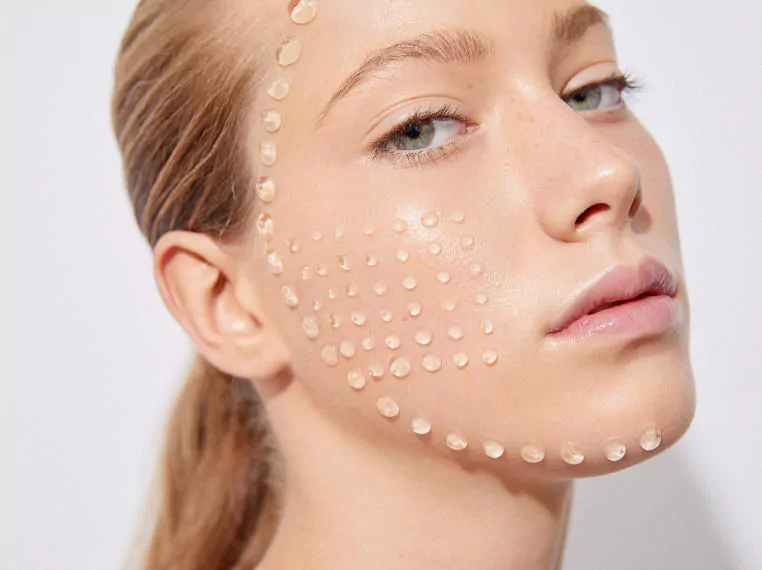The world of aesthetics is continually evolving, bringing forth innovative treatments tailored to various skin needs. Among these advancements, skin boosters and dermal fillers are highly sought after for their rejuvenating effects. But how do they differ, and in what ways are they similar? Let’s dive in.
How Are They Similar?
Both skin boosters and dermal fillers involve injecting hyaluronic acid-based gels to enhance the skin’s appearance. At Skinly Aesthetics in NYC, Dr. Schwarzburg uses both treatments to offer minimally invasive solutions with quicker recovery times compared to traditional surgical procedures. A key ingredient in both treatments is hyaluronic acid, which is renowned for its hydrating properties and its role in maintaining healthy skin.
How Are They Different In Goals?
The primary goal of skin boosters is skin revitalization. These treatments focus on enhancing skin hydration, improving light reflection, and refining overall texture without altering facial structure. The result is a hydrated, radiant complexion, effectively addressing fine lines and uneven skin tone.
Dermal fillers, on the other hand, are often used for structural changes. They not only hydrate the skin but also add volume, shape, and contour to areas like the lips, cheeks, and under the eyes. These fillers provide more significant changes by enhancing facial features and restoring youthful fullness.
How Are Their Formulations Different?
While both skin boosters and dermal fillers use hyaluronic acid, their formulations are different. Facial fillers are characterized by their crosslinking – the chemical bonds between hyaluronic acid molecules. This crosslinking determines the filler’s longevity, thickness, and purpose. In contrast, skin boosters feature non-crosslinked or minimally crosslinked hyaluronic acid, making them thinner and suitable for superficial injections into the skin’s top layers.
Are They Injected the Same Way?
The administration techniques for these treatments also differ. Skin boosters are injected into the skin’s top layers or just below the dermis using a microdroplet technique, which provides hydration from within and allows the product to spread evenly, giving a natural glow.
Conversely, dermal fillers are administered deeper into the skin using a variety of techniques, such as bolus, fanning, and linear threading. These methods provide structural support, volume, and lift to targeted facial areas. Dr. Schwarzburg’s expertise ensures precise application, enhancing your natural beauty with both treatments.
Are The Risks and Complications the Same?
As with any aesthetic treatment, there are risks involved. Skin boosters, due to their superficial nature, often result in temporary redness or minor swelling. Dermal fillers can have similar side effects but, since they’re injected deeper, may lead to more pronounced swelling or, in rare cases, lumpiness and asymmetry if not administered correctly. At Skinly Aesthetics, Dr. Schwarzburg minimizes these risks through careful application and advanced techniques.
How Long Do They Last?
The longevity and frequency of skin boosters and dermal fillers vary due to their different compositions. Skin boosters typically require regular sessions every few months to maintain the skin’s radiant glow, as they feature non-crosslinked or minimally cross-linked hyaluronic acid, which provides hydration but breaks down more quickly.
In contrast, dermal fillers use crosslinked hyaluronic acid, which creates a denser, more durable structure that lasts longer. This crosslinking results in dermal fillers providing visible results for six months to a year or more, depending on the product and treatment area.
Are They Both Safe?
Both skin boosters and dermal fillers are safe when administered by experienced professionals like Dr. Schwarzburg at Skinly Aesthetics. These treatments use FDA-approved products, ensuring high safety standards and efficacy. Skin boosters, due to their superficial application, typically result in minimal side effects such as temporary redness or minor swelling. Dermal fillers, while also safe, involve deeper injections and can occasionally lead to more pronounced swelling or rare complications like lumpiness if not properly administered.
Which One is Better?
The choice between skin boosters and dermal fillers depends on your specific skin concerns and aesthetic goals. Skin boosters are ideal for those seeking deep hydration, improved skin texture, and a radiant complexion without altering facial structure. They are perfect for enhancing overall skin health and achieving a natural glow.
Dermal fillers, on the other hand, are better suited for individuals looking to add volume, shape, and contour to specific facial areas like the lips, cheeks, and under the eyes. They provide more structural changes and can effectively address deeper wrinkles and facial hollows. Consulting with Dr. Schwarzburg at Skinly Aesthetics will help determine the best treatment option tailored to your unique needs and desired outcomes.
Taking The Next StepIf you’re considering enhancing your skin with either skin boosters or dermal fillers, the next step is to schedule a consultation with Dr. Schwarzburg at Skinly Aesthetics. During this consultation, Dr. Schwarzburg will assess your skin, discuss your aesthetic goals, and recommend the most suitable treatment plan tailored to your needs. You’ll have the opportunity to ask questions and gain a clear understanding of what to expect from the procedure. Contact Skinly Aesthetics today to take the first step toward achieving your desired look and rejuvenating your skin.
 info@skinlyaesthetics.com
info@skinlyaesthetics.com  212-774-4264
212-774-4264 

